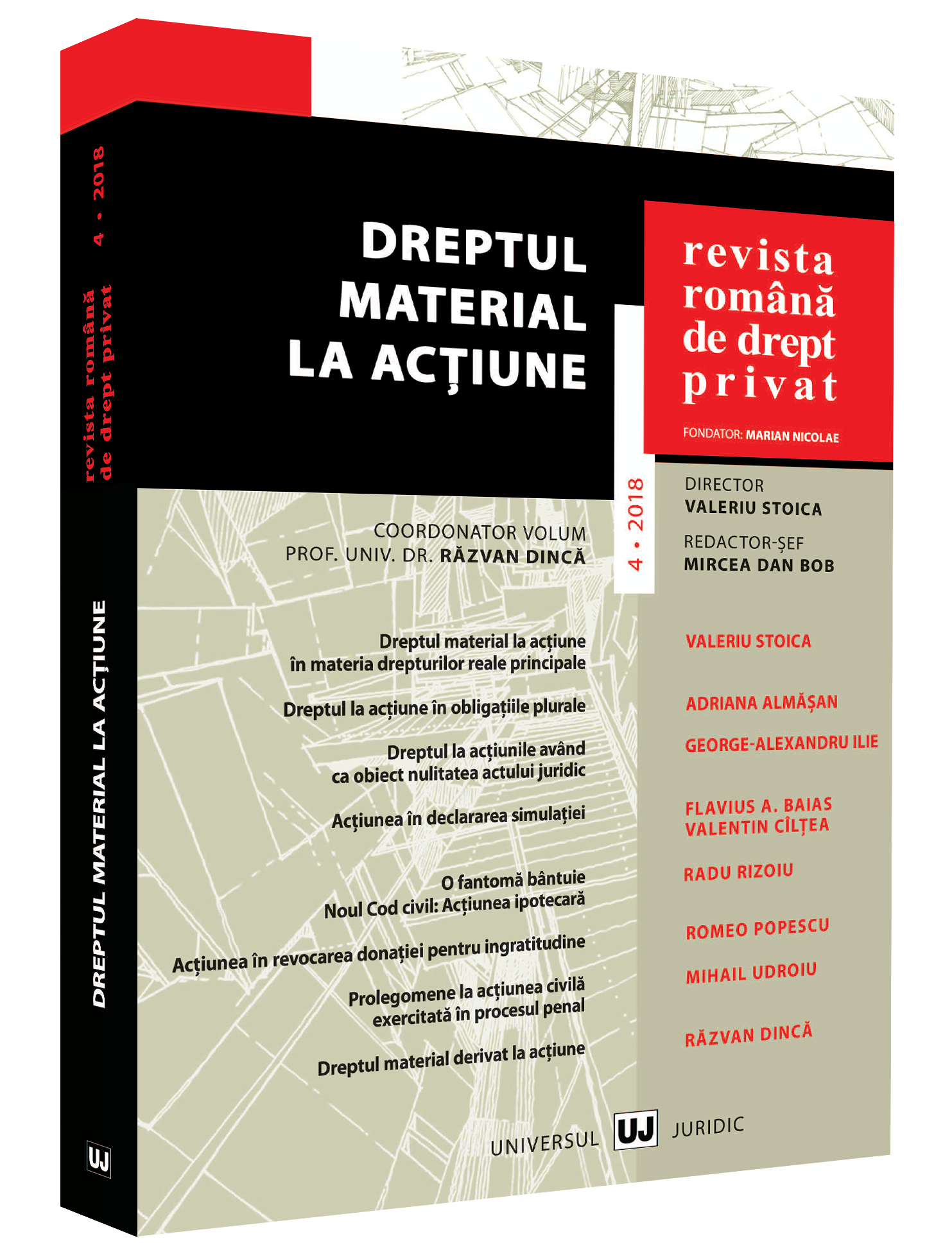Dreptul material derivat la acţiune
Derived material right to action
Author(s): Răzvan DincăSubject(s): Law, Constitution, Jurisprudence, Civil Law
Published by: Universul Juridic
Keywords: derivative material right to action; primary material rights to action; direct actions; binding force of the contract; attachment; enforcement by substitute performance; oblique action;
Summary/Abstract: The author of this study intends to introduce the notion of derivative material right to action. The concept of derivative material right to action is an autonomous concept, with a defined legal regime, which can be deduced, on the one hand, from express provisions and, on the other hand, from understanding the mechanism by which such a right is recognized based on two primary material rights to action. In all cases, these primary rights have the same object and the passive subject of the primary major right to action is an active subject of the minor primary right to action. The derivative right to action has as active subject the active subject of the major primary right to action, and as passive subject the passive subject of the minor primary right to action. The arising, the exercise formalities, the legal acts of amendment, consolidation, transfer or extinction, the limitation and realization of the primary rights to action shall be reflected on the derivative right to action. Inversely, the realization of the derivative material right to action, either by obtaining the enforceable title or by its enforcement, implies the simultaneous realization, at least partially, of the primary material rights to action. Consequently, the exercise of the derivative right to action by its active subject involves a necessary litis consortium between its passive subject and the passive subject of the major primary right to action. The mechanism is found in cases expressly provided by law, such as that of stricto sensu direct actions or ex lege expansion of the personal field of the binding force of the contract, as well as in the absence of an express legal provision, in the application of legal institutions such as attachment or enforcement by substitute performance of an obligation to do which also includes the exercise of a right of action. In its field of application, the derivative right to action removes other common law mechanisms, such as the oblique action of its active subject or the tor civil liability of its passive subject.
Journal: Revista Română de Drept Privat
- Issue Year: 2018
- Issue No: 04
- Page Range: 471-502
- Page Count: 32
- Language: Romanian
- Content File-PDF

